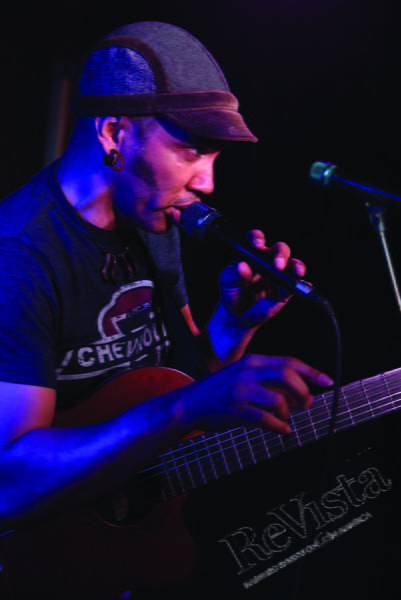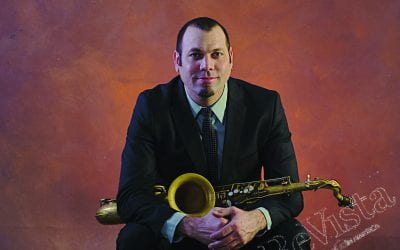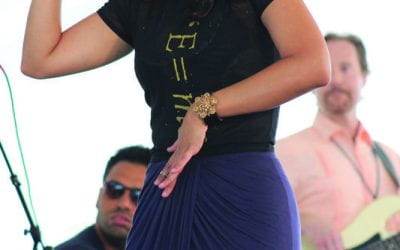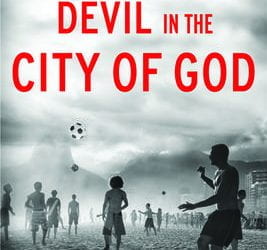Musical Transitions:
Transnational Singer-Songwriters Give Voice to a Changing Cuba
Cuban singer-songwriter Luis Barbería’s album, A Full, was awarded the prize for best album in Cuba’s annual music awards, Cubadisco in May 2015. Vocal group Sexto Sentido, the jazz piano of Harold López Nussa, and guitarist Nam Sam Fong accompanied him in the album, providing the glue that bound together the sound of four Habana Abierta albums from 1996 to 2011. AFull’s blend of funk, R & B, guaguancó, and close harmonies is as much a commentary on the musical influences that shaped Barbería’s musical experience over the previous two decades as it is a mature and confident statement of his artistic present.
A member of the collective Habana Abierta, Barbería left Cuba in 1996 for Spain, where he lived for nearly two decades. In 2014 he returned to live in Cuba, joining a growing number of former émigré musicians who have returned—as musical professionals—to Cuba. Barbería’s win was an unprecedented embrace of a prodigal son, but it comes after a gradual engagement with diasporic artists by the Cuban musical establishment.
Musicians have been audible representatives of the diaspora that scattered a generation of Cubans in the 1990s and early 2000s. In many ways they can be seen as the “canaries in the coal mine” of a slow-moving Cuban transition. Maintaining artistic and personal ties to the island, their music voiced a claim for Cuban citizenship that transcended territory boundaries and pushed back against previous binaries of patriotic belonging or exile.
THE BEGINNINGS
The singer-songwriters who emerged in the late 1980s and early 1990s came of age at a time of transition and economic and political unrest. While still revolutionary in their thinking, they responded by turning their songs inward, critiquing contemporary social issues, generational concerns and frustration with political stasis. The 1990s economic crisis in Cuba brought fiscal and material shortages as well as a tightening of restrictions on expression following the fall of the Berlin Wall. With the collapse of the Soviet Union, the state had neither the mind nor the means to contain and foster counter-cultural creative effervescence. Instead, officials worked to suppress artistic activities, using musicians’ amateur status to marginalize them from institutions, keeping them out of state media and barring their access to performance venues.
Musicians responded by organizing themselves, playing with and for each other in a variety of peñas, or jam sessions, around Havana. For the musicians, most of whom were self-taught, the peña gatherings were “our school,” as Luis Barbería later told me, their collective pedagogy shaping the sound of a generation. At peñas, musicians not only enjoyed, critiqued and collaborated with each other’s songs; they shared the space with poets, humorists, artists and actors, creating a scene that Vanito Cabellero described to me as “una gran bohemia artística” and that Kelvis Ochoa later commemorated in his song, “Cuando salí de La Habana.”
Tensions grew between the musicians, who wanted to advance professionally, and institutional functionaries, who denied them access. It is impossible to know what would have transpired had musician Pavel Urkiza not returned to Cuba from Spain in 1995 with a contract to record a collaborative album for the Spanish record label, Nube Negra, titled Habana Oculta. The musicians were invited to travel to Spain to launch the album, but this posed a problem; they needed exit visas and as professionally unaffiliated musicians, they had no institution to sponsor them. The youth cultural organization, the Associación de Hermanos Saíz. sponsored the unaffiliated musicians, signing off on their exit visas, a move that, at the time, was assumed to be “definitivo.” Joaquín Borges-Triana described the actions of the AHS as both a “rescue mission” for the artists and a “releasing of pressure” for the state.
In Spain, members of the Habana Oculta project, along with other members of their cohort who were not in Havana at the time of the first recording, recorded two more albums with the BMG Ariola label under the name that would come to define them, Habana Abierta. Musically hybrid, danceable, with direct lyrics that spoke to contemporary social concerns, the music of Habana Abierta spread back to the island through cassettes and burned CDs. Here were musicians who had left, but who were not exiles, making music that was aesthetically and rhetorically directed at a home audience. Their collective protagonism and distant location enacted a kind of transnational solidarity that reimagined Cuban citizenship for a generation that had been literally torn apart by the diasporic reality of the 1990s and early 2000s. That the counter-cultural possibility represented by Habana Abierta was understood by fans back on the island is illustrated by the catharsis that greeted their triumphant return in 2003, when they performed in Havana at the Tropical amphitheater for a crowd estimated to number between 8 ,000 and 10,000.
MUSIC AND TRANSNATIONAL CUBAN CITIZENSHIP
If Habana Abierta represented a call for a wider definition of Cuban citizenship, this claim was made more explicit by the Interactivo collective. Led by pianist Robertico Carcassés, Interactivo was founded in 2001 and is based on the island. Like Habana Abierta, the group practices a collective protagonism, with songwriters and instrumentalists representing a wide variety of musical styles cycling through the ensemble. If Habana Abierta represented the voice of Cubans demanding to be heard from outside its territorial boundaries, Interactivo has simply refused to recognize such boundaries, collaborating with artists resident on and off the island in an undeniably political performance practice. The most striking example of this occurred in a 2002 concert in Havana’s Teatro Nacional that was later broadcast on Cuban television. The concert was a tour de force of Cuba’s most virtuosic musical talent, bringing together singer-songwriters and rappers with Havana’s most select jazz musicians, multiple percussionists, a brass section to rival the “horns of terror” of NG la Banda, and a string orchestra. Joining them onstage were Cuban musicians living abroad: Gema Corredera, Pavel Urkiza, and Kelvis Ochoa, then resident in Spain, and Descemer Bueno, then resident in the United States. The inclusion of émigré artists in official media was unprecedented and their audible and visible presence enacted a radical politics of citizenship and belonging that no pamphlet or forum on “repatriation” could achieve.
Since then, a wave of former émigré musicians has returned to Cuba’s shores, including David Torrens (from Mexico) and Raúl Paz (from France). Descemer Bueno, who penned the 2014 hit song, “Bailando,” traveled freely between Cuba and the United States. Transnational artists living abroad as well as returnees strained a state policy used to writing off those who had left, and they can be seen as public and audible test cases for policy reform. Transnational musicians—both those who remain abroad and those who have returned—can be seen as public and audible instigators of policy change. The first evidence of change occured in the early 2000s when two prominent groups living abroad, Orishas (in France) and Habana Abierta (in Spain), were brought to Cuba to perform with an official invitation from the Ministry of Culture. The Ministry later continued a slow politics of opening by seeking to “repatriate” artists who had lost the right to return by overstaying their exit visas. All of these changes—the return of Ochoa and Torrens, the peregrinations of Bueno, and the “repatriation” of artists by the Ministry—occurred before 2013 emigration reforms officially allowed Cubans to retain their citizenship even if residing abroad.
While the voices of musicians in Havana, Miami or Madrid have tested state tolerance of its diasporic citizenry, they are voices that could easily be silenced. Such silencing could be overt, as Interactivo learned in 2013 when its overly loud call for greater opening resulted in an immediate professional blacklisting by the Instituto Cubano de la Música, or as subtle as a “malfunctioning” audio system or a visa that arrives too late.
Sound carries, and musicians’ voices often reach opposite shores well ahead of diplomats and politicians. The careers and collaborations of Cuban musicians over the last twenty years have been remarkably prophetic of changes in Cuba’s economic, cultural, and immigration policies. We should all listen to what they sing of next.
Winter 2016, Volume XV, Number 2
Susan Thomas is Associate Professor of Musicology and Women’s Studies at the University of Georgia. Her book, Cuban Zarzuela: Performing Race and Gender on Havana’s Lyric Stage, is the recipient of the Robert M. Stevenson Prize (American Musicological Society) and the Pauline Alderman Award (International Association of Women in Music) and she is currently completing a book on the transnationalization of Cuban popular music. She was a 2011-12 DRCLAS Santander Visiting Scholar.
Related Articles
Musical Identity
English + Español
Frankly, I’m not used to talking about myself, and even less writing about myself. My way of expressing myself has been through musical notes, whether the buoyant Cuban clave rhythms…
Dominican Bachata
English + Español
Ask kids in any U.S. urban middle school if they know who Romeo is. They’ll likely respond with an enthusiastic yes, but their answer will not refer to the Romeo in Shakespeare’s classic play…
Dancing with the Devil in the City of God
Juliana Barbassa and I have similar stories. We are both Brazilian with a chronic case of wanderlust, but in some ways on opposite tracks: Barbassa is from Rio and I am from São Paulo…





